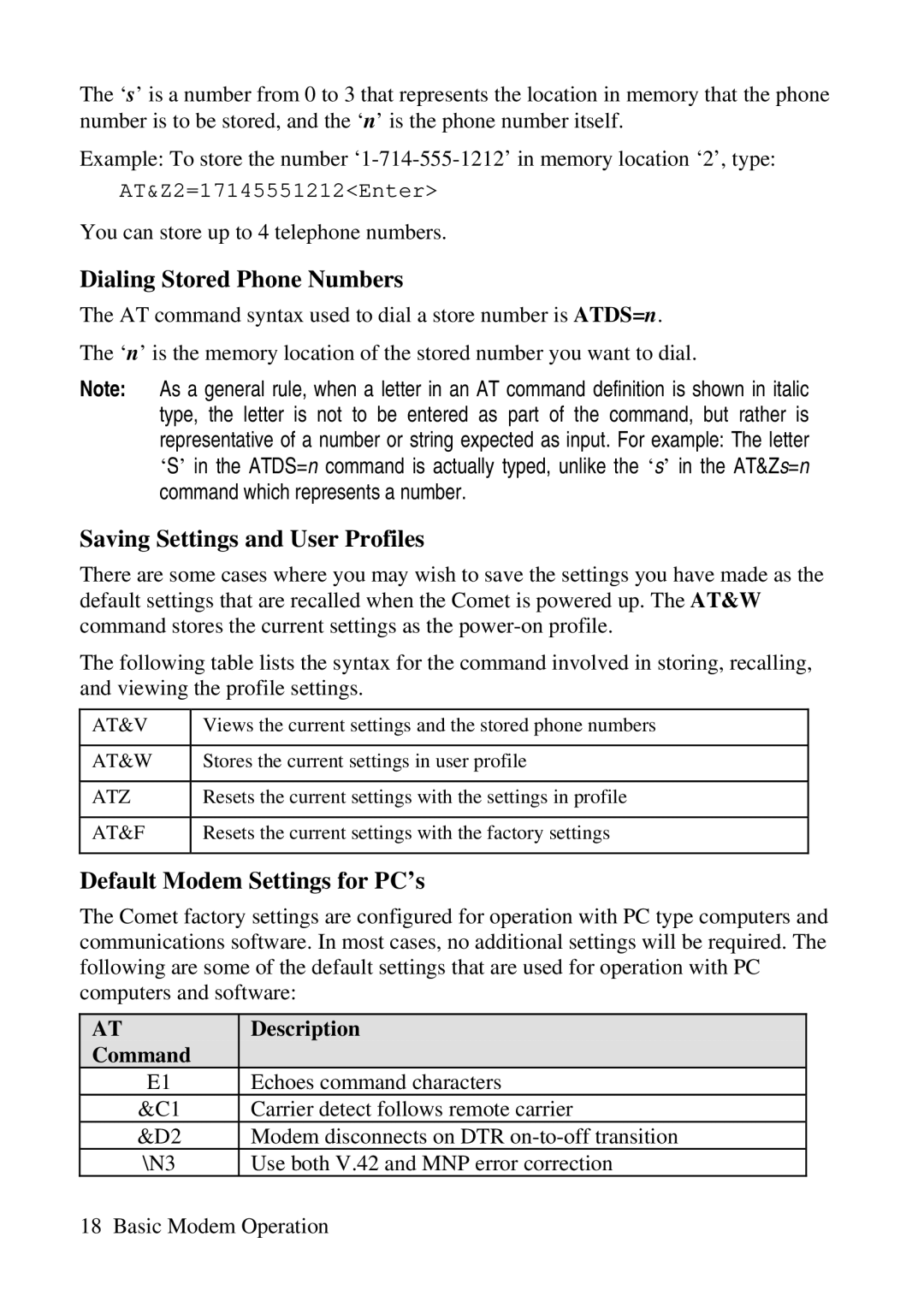The ‘ s’ is a number from 0 to 3 that represents the location in memory that the phone number is to be stored, and the ‘ n’ is the phone number itself.
Example: To store the number ‘
AT&Z2=17145551212<Enter>
You can store up to 4 telephone numbers.
Dialing Stored Phone Numbers
The AT command syntax used to dial a store number is ATDS=n.
The ‘ n’ is the memory location of the stored number you want to dial.
Note: As a general rule, when a letter in an AT command definition is shown in italic type, the letter is not to be entered as part of the command, but rather is representative of a number or string expected as input. For example: The letter
‘S’ in the ATDS=n command is actually typed, unlike the ‘ s’ in the AT&Zs=n command which represents a number.
Saving Settings and User Profiles
There are some cases where you may wish to save the settings you have made as the default settings that are recalled when the Comet is powered up. The AT&W command stores the current settings as the
The following table lists the syntax for the command involved in storing, recalling, and viewing the profile settings.
AT&V | Views the current settings and the stored phone numbers |
|
|
AT&W | Stores the current settings in user profile |
|
|
ATZ | Resets the current settings with the settings in profile |
|
|
AT&F | Resets the current settings with the factory settings |
|
|
Default Modem Settings for PC’ s
The Comet factory settings are configured for operation with PC type computers and communications software. In most cases, no additional settings will be required. The following are some of the default settings that are used for operation with PC computers and software:
AT | Description |
Command |
|
E1 | Echoes command characters |
&C1 | Carrier detect follows remote carrier |
&D2 | Modem disconnects on DTR |
\N3 | Use both V.42 and MNP error correction |
18 Basic Modem Operation
